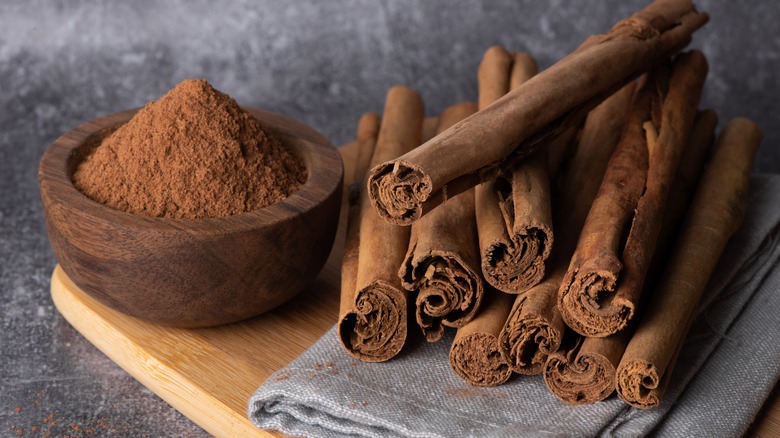Cinnamon isn’t just for your kitchen spice rack; it’s also a powerful ally for your lawn and could also help your garden thrive. When applied correctly, this spice could transform your outdoor space into a sanctuary for grass, primarily by deterring pests and promoting healthy growth. A pest-infested lawn becomes weak and susceptible to a variety of diseases. Pests like beetles, ants, voles, squirrels, rabbits, and birds can damage the root systems of your grass, creating an uneven and unattractive lawn. The damage can sometimes be so extensive that you have no option but to reseed or replace large sections of your grass, which is both time-consuming and costly. Moreover, a healthy lawn has more than just aesthetic benefits. It is a natural filter for pollutants, helps prevent soil erosion, and can even improve your property’s value.
Enter cinnamon. Originating from the bark of the Cinnamomum tree, cinnamon boasts a rich history that extends far beyond culinary uses. Its medicinal applications are well-documented, benefiting both human and plant health thanks to its antioxidant and anti-inflammatory properties. These characteristics promote a healthier, more resilient lawn over the long term. So, when used judiciously, cinnamon can be a powerful ally if you want to avoid harsh chemicals.
Use cinnamon for pest and disease control

Cinnamon’s multifaceted role in lawn care begins with its potent ability to repel a variety of nuisances, including squirrels and rabbits. These creatures find the smell of this spice overwhelmingly off-putting, making it an excellent natural repellent. Further, this kitchen spice is also a formidable antifungal agent. If your lawn suffers from common diseases like brown patches or rust, don’t underestimate the power of cinnamon to combat these problems. A light but thorough application to the troubled spots can be highly effective. The cinnamon’s natural antifungal compounds work efficiently to suppress fungal growth, providing you with a natural and less harmful alternative to chemical fungicides. Additionally, this spice has also been known to reduce the amount of weeds in a yard.
One of its lesser-known but equally crucial roles is helping to manage your soil’s pH levels. While this ingredient isn’t a substitute for a rigorous, scientific soil test, it does contribute to keeping your soil’s pH within a range that is beneficial to most grass types — generally a slightly acidic to neutral pH range. A well-balanced pH level creates the ideal conditions for nutrient uptake by your grass, preventing the soil from being too acidic or too alkaline. Lack of essential nutrients like nitrogen, phosphorus, and potassium results in less robust growth, dull coloration, and increased susceptibility to diseases and pests.
The right way to sprinkle this spice
While cinnamon offers an array of benefits for your lawn, it’s crucial to exercise caution to prevent unintended negative effects. Too much may harm the beneficial microorganisms that contribute to soil health and nutrient cycling. In this vein, moderation is key to ensuring that the helpful earthworms and microbes remain active and healthy in your soil. A lighter application is usually sufficient for targeting pests. A rate of about 0.25 to 0.5 ounces per 10 square feet of your lawn works well. However, if you aim to tackle fungal issues or improve soil quality, a more robust application of up to 4 ounces per 10 square feet is advisable.
To achieve an even distribution, consider preparing a cinnamon-water solution. Mix 4 to 5 tablespoons of ground cinnamon into a gallon of water, and use a watering can or sprayer to evenly apply this mixture to your soil or plants but not on top of your grass. This technique ensures that the cinnamon comes into direct contact with the areas needing attention while minimizing the soil’s microbial community risk. Remember that reapplication is an option if you’re dealing with stubborn issues. Waiting 3 to 4 weeks between treatments allows you to assess the effectiveness of the initial application and gives your lawn time to absorb the spice. This interval is generally long enough to see significant improvement but short enough to ramp up your efforts if needed.